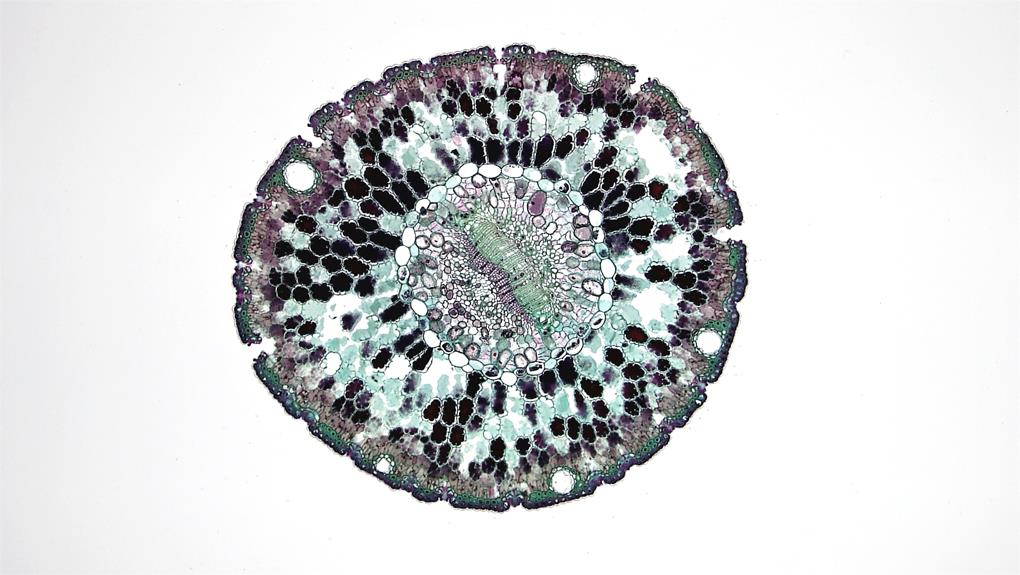New Breakthroughs in Langerhans Cell Histiocytosis
This article provides a comprehensive analysis of recent developments in understanding and treating Langerhans Cell Histiocytosis (LCH), a rare disorder. The discussion explores innovative therapeutic approaches, advancements in diagnostic methods, and insights into LCH's molecular genetics. This valuable resource is beneficial for medical professionals, researchers, and those seeking to understand LCH better, contributing to the collective efforts to combat this disease.

Key Takeaways
- Diagnostic advancements have improved accuracy of Langerhans Cell Histiocytosis (LCH) diagnosis.
- Recent research has led to the discovery of the BRAF V600E mutation in a significant proportion of LCH patients, allowing for targeted therapies.
- Immune checkpoint inhibitors show potential as novel treatment approaches for LCH.
- Ongoing research brings hope to patients and moves closer to a cure for LCH.
Understanding Langerhans Cell Histiocytosis
Understanding Langerhans Cell Histiocytosis (LCH) requires a comprehensive grasp of its cause, the potential treatment options, and the importance of early screening for this rare disease. Diagnostic advancements have opened new avenues in LCH research, allowing for more precise identification of the disease. These advances in technology and methodology are instrumental in devising effective treatment plans. For instance, the use of immunohistochemistry and flow cytometry has significantly improved the accuracy of diagnosis. However, the psychological impact of LCH cannot be understated. It is a life-changing diagnosis that requires significant emotional adjustment and coping mechanisms. Therefore, healthcare providers should not only focus on physical treatment but also provide adequate psychological support to both patients and their families.
Historical Overview of Langerhans Cell Histiocytosis
In the realm of medical science, Langerhans Cell Histiocytosis has undergone significant changes in perception and understanding over the years, and it was not until the late twentieth century that this disease was recognized as a distinct clinical entity. Within the historical context of this rare disorder, its definition and classification have been refined as knowledge about its origin, behavior, and epidemiology of disease have evolved. Initially, it was considered a form of cancer due to its aggressive nature in some patients. However, advancements in molecular biology and genetics revealed it to be a spectrum of disorders resulting from an abnormal proliferation of Langerhans cells. These breakthroughs have shaped the current understanding and management of the disease, paving the way for targeted therapeutic strategies.
Recent Advances in Langerhans Cell Histiocytosis Research
Recent research developments have substantially expanded the scientific community's knowledge about Langerhans Cell Histiocytosis, paving the way for innovative therapeutic strategies. These recent research advancements have led to the discovery of the BRAF V600E mutation in a significant proportion of patients, enabling the development of targeted therapies. This discovery has revolutionized our understanding of the disease, providing a genetic basis for its diverse clinical manifestations. Furthermore, studies have highlighted the potential of immune checkpoint inhibitors, offering novel treatment approaches. These breakthroughs suggest the possibility of personalized therapy based on genetic profiling, transforming the treatment landscape for Langerhans Cell Histiocytosis. These advancements underscore the importance of ongoing research in bringing hope to patients and moving us closer to a cure.
Diagnostic Techniques in Langerhans Cell Histiocytosis
Accurate diagnosis of Langerhans Cell Histiocytosis hinges on advanced imaging techniques and histopathological examination, providing clinicians with vital information to guide therapeutic strategies. Diagnostic techniques advancements have led to refined imaging modalities such as PET-CT, helping to identify disease extent and activity more accurately. Histopathological examination remains pivotal in confirming the diagnosis, involving immunohistochemical staining to identify the unique CD1a and CD207 markers characteristic of Langerhans cells. Molecular genetic testing is also increasingly used to detect BRAF V600E mutations, prevalent in many cases. These diagnostic advances not only enhance accuracy, but also enable the identification of disease subtypes, potentially guiding novel treatment approaches. Thus, timely and precise diagnosis is crucial in managing this complex disorder, and ongoing research promises further improvements.
Current Standard Treatments for Langerhans Cell Histiocytosis
Navigating through the complexities of Langerhans Cell Histiocytosis, the current standard treatments primarily involve chemotherapy, steroid therapy, and in severe cases, stem cell transplantation. These approaches aim to control disease progression and manage symptoms, but outcomes can vary widely depending on the individual patient's condition. Current clinical trials are exploring novel targeted therapies that promise more specific, effective interventions. These include inhibitors that block the signaling pathways of proteins implicated in the disease, potentially reducing its aggressiveness. The evolving landscape of Langerhans Cell Histiocytosis treatment is indeed promising, with researchers relentlessly pushing the boundaries to improve patient prognosis and quality of life. This underscores the continued importance of clinical trials in driving forward the development and implementation of new therapies.
Promising New Therapies in Langerhans Cell Histiocytosis
Building upon years of rigorous research, several promising new therapies are emerging in the fight against Langerhans Cell Histiocytosis, with the potential to revolutionize treatment strategies and improve patient outcomes. These promising therapies aim to target the disease at its root, by focusing on the genetic factors that contribute to its onset. Advancements in gene sequencing techniques have allowed researchers to identify certain genetic mutations associated with the disease, paving the way for the development of targeted therapies. Clinical trials investigating these novel treatments are currently underway, and preliminary results have been encouraging. While further research is needed to fully understand the long-term efficacy and safety of these therapies, the progress made thus far marks a significant step forward in the fight against Langerhans Cell Histiocytosis.
Treatment Side Effects and Management
While the development of new treatments for Langerhans Cell Histiocytosis holds great promise, it is crucial to consider the potential side effects and establish effective management strategies to ensure optimal patient outcomes. These treatments, while potent, may have long term effects that can impact the patient's quality of life. Understanding these effects and their potential implications is an essential part of treatment planning. It's equally important to explore alternative therapies that can either supplement the primary treatment or serve as viable options for patients who cannot tolerate the standard therapy. By doing so, we can offer more holistic care that accounts for the patient's overall well-being while combating the disease. Continuous research and patient education are integral in managing these side effects and enhancing treatment efficacy.
Patient Stories: Living With Langerhans Cell Histiocytosis
In this section, we will delve into the personal experiences of patients who are living with Langerhans Cell Histiocytosis, and their unique journeys will provide valuable insights into the daily challenges and victories associated with this condition. Many of these individuals have found solace in patient support communities, where they share their experiences, triumphs, and fears. The exchange of information in these groups often extends to discussions on alternative therapies, outside of traditional medical interventions. These therapies, which may include nutritional adjustments or holistic treatments, can at times complement standard treatments, providing an additional layer of comfort and control. While every journey with Langerhans Cell Histiocytosis is unique, the common threads of resilience, support, and exploration of alternative therapies are woven through many patient stories.
The Role of Genetics in Langerhans Cell Histiocytosis
Recent advances in genetic research have significantly illuminated the role of genetic mutations in the pathogenesis of Langerhans Cell Histiocytosis (LCH). It is becoming apparent that LCH is not just a random occurrence but may be tied to a genetic predisposition. Certain mutations, especially in the BRAF gene, have been identified as significant contributors to LCH development. This realization underscores the importance of molecular mechanisms in understanding disease progression and potential treatment strategies. In-depth genetic analysis can help identify those at risk and predict disease severity. This knowledge can lead to more targeted and effective treatment plans. The role of genetics in LCH is undeniably crucial and further research in this area promises to open up new avenues for managing this complex disease.
Langerhans Cell Histiocytosis in Children Versus Adults
Approximately 50% of all Langerhans Cell Histiocytosis (LCH) cases occur in children under the age of 15, revealing a notable difference in disease prevalence between adults and the pediatric population. This divergence extends to differences in treatment. Pediatric LCH patients typically undergo chemotherapy, while adults might receive a combination of surgery, radiation, and systemic therapy. The long-term effects of LCH also vary significantly. Children may experience growth delays, neurodegeneration, and pituitary gland dysfunction, impacting their development. Adults, on the other hand, potentially face lung and liver complications. These disparities underscore the need for age-specific therapeutic strategies and follow-up care to mitigate the long-term effects of LCH. Understanding these differences is crucial for improving patient outcomes in both demographics.
Coping Strategies for Patients and Families
Navigating the emotional labyrinth that accompanies a diagnosis of Langerhans Cell Histiocytosis requires a robust set of coping strategies for both patients and their families. Central to this is patient support, which includes physical care, mental health services, and a network of understanding peers. Coping mechanisms such as mindfulness, cognitive-behavioral techniques, and expressive therapies can also be beneficial. Families should not shy away from seeking professional help, such as family or individual therapy, to manage their feelings and fears. Joining a support group can provide a comforting sense of community. Finally, maintaining a semblance of normalcy through routine and activities can help in creating a safe space for emotional healing. These strategies can provide a vital lifeline during this challenging time.
Support Resources for Langerhans Cell Histiocytosis Patients
Understanding the breadth of available support resources, and coordinating their use, is fundamental to the journey towards wellness for patients dealing with Langerhans Cell Histiocytosis. A variety of patient support tools are at patients' disposal. From professional medical counseling to patient-led initiatives, the landscape of support is broad and diverse. Online communities, particularly, offer an invaluable platform for patients to connect with others experiencing similar challenges. These digital platforms provide a space for sharing experiences, insights, and practical advice. Further, they foster a sense of camaraderie among patients, emphasizing that no one is alone in their journey. In addition, numerous non-profit organizations offer tools and resources to aid patients in understanding and managing their condition, fostering a path towards improved health and wellness.
Future Directions in Langerhans Cell Histiocytosis Research
Several promising avenues of research are currently being explored to further enhance our understanding and treatment of Langerhans Cell Histiocytosis. Current clinical trials are providing valuable insights into the biology of this disease and are offering the potential for the development of more effective and targeted therapies. These trials are uncovering novel genetic and molecular mechanisms that underlie the disease, which could serve as potential targets for future treatment options. The next frontier in Langerhans Cell Histiocytosis research is to translate these scientific discoveries into safe and effective therapies that can improve the prognosis and quality of life for patients. This will require continued investment in basic research, clinical trials, and collaboration among scientists, clinicians, and patient communities.
Role of Lifestyle Factors in Langerhans Cell Histiocytosis
The role of lifestyle factors in Langerhans Cell Histiocytosis is a critical aspect to consider, and it is increasingly being recognized for its potential impact on disease progression and management. The impact of diet on Langerhans Cell Histiocytosis, for instance, is an area of growing research interest. While a direct causal link has not yet been fully established, there is a growing body of evidence suggesting a correlation between diet and disease progression. Similarly, the role of exercise in Langerhans Cell Histiocytosis management is gaining recognition. Regular physical activity has been shown to improve overall health, which could potentially influence the course of the disease. Further research is required to understand better these connections and their implications for patient treatment and care.
Understanding Prognosis and Survival Rates
In assessing the outlook for a patient with Langerhans Cell Histiocytosis, one must consider various factors including prognosis and survival rates. Prognosis improvement is largely dependent on early diagnosis, the extent of disease, and the patient's response to treatment. Survival rate analysis reveals that in many cases, particularly in children, the disease can be successfully managed, leading to a favorable prognosis. However, it is important to note that every case is unique and the disease progression varies significantly among patients. In recent years, advances in treatment modalities and the advent of targeted therapies have significantly improved the prognosis and survival rates for this complex disorder. Continuous research and clinical trials offer hope for even better outcomes in the future.
Frequently Asked Questions
What Support Groups or Online Communities Exist for Individuals With Langerhans Cell Histiocytosis?
Several support groups and online communities exist for individuals with Langerhans Cell Histiocytosis. These platforms provide emotional coping assistance and discuss various therapeutic strategies. Websites such as Histiocytosis Association and Rare Connect host forums for patients and caregivers. Social media groups on Facebook and Reddit offer peer support. It's beneficial to connect with these communities to share experiences, learn about latest treatments, and find comfort in knowing one is not alone in dealing with this condition.
Are There Specific Dietary Recommendations for Patients Diagnosed With Langerhans Cell Histiocytosis?
For patients with Langerhans Cell Histiocytosis, disease management often involves a balanced, nutritious diet. While there are no specific dietary guidelines, maintaining good nutrition is paramount. Nutritional supplements may be beneficial in cases where patients are unable to maintain adequate nutrition. It's recommended to consult with a dietitian or healthcare provider to develop an individualized dietary plan. This advice is irrespective of recent breakthroughs in Langerhans Cell Histiocytosis.
How Does Langerhans Cell Histiocytosis Affect Pregnancy and Fertility?
Langerhans cell histiocytosis (LCH) can potentially impact pregnancy and fertility in several ways. Pregnancy complications may arise due to the body's altered immune response, and the disease can affect the endocrine system, potentially impacting fertility. However, with careful management and potentially fertility treatments, many individuals with LCH are able to conceive and carry a pregnancy to term. It's crucial for patients to discuss individual risks and management strategies with their healthcare provider.
Can Langerhans Cell Histiocytosis Recur After Treatment? if So, What Measures Can Be Taken to Lower the Risk?
Langerhans Cell Histiocytosis (LCH) can recur after treatment, though it depends on individual cases. Treatment side effects can contribute to this recurrence. Preventive strategies involve regular follow-ups for early detection of recurrence, maintaining good health and immune function, and in some cases, additional or adjunct therapies. It's critical that patients adhere to the individual treatment plan laid out by their healthcare provider to lower the risk of recurrence.
Are There Any Financial Assistance Programs Available for Patients Undergoing Treatment for Langerhans Cell Histiocytosis?
Yes, financial assistance programs are available for patients undergoing treatment for Langerhans Cell Histiocytosis. These programs can help address insurance coverage challenges associated with the disease's treatment. Organizations like the American Cancer Society offer resources for financial aid. Additionally, alternative treatment options may be available that offer different cost structures. It's recommended to consult with a financial advisor or social worker who specializes in healthcare to explore all available resources.
Conclusion
Emerging developments in Langerhans Cell Histiocytosis (LCH) research are promising. With continued breakthroughs in diagnostic methods, innovative treatments, and an improved understanding of the disease's molecular genetics, there is a renewed sense of hope for affected individuals. Furthermore, increased support resources and an understanding of lifestyle factors augment this progress. Emphasizing the importance of these strides, it is hoped that ongoing research will lead to more effective ways to manage and ultimately defeat LCH.

This post has been generated by AI and was not reviewed by editors. This is Not legal advice. Please consult with an attorney.




